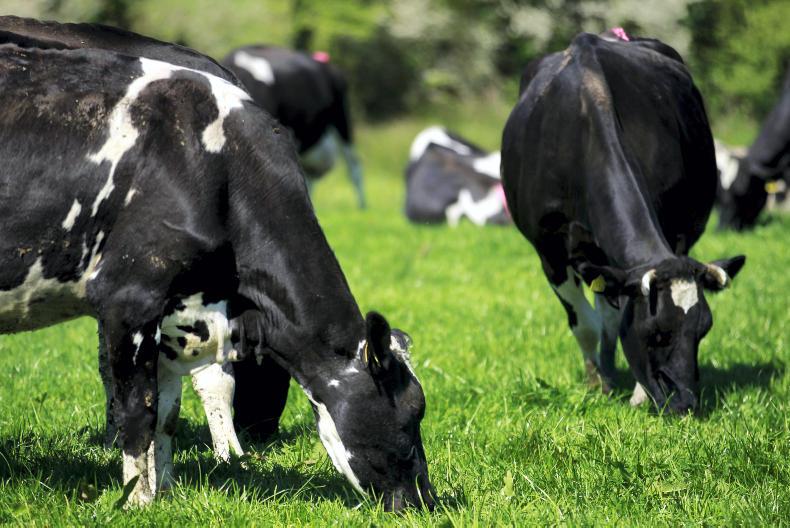Grass growth rates are exceptional at present. Looking at data from our Grass+ farms, the average growth rate is over 70kg per day.
This is about 20kg/day more than expected for this time of year.
Soil temperatures are running between 1°C and 1.5°C higher than normal, so this, along with abundant soil moisture, is driving on growth rates.
While this is good news, the higher-than-normal growth rates are posing headaches for farmers. Normally, most farmers don’t get surplus grass in late August so they don’t have to worry about it, but this year is different.
Farmers’ fears
The fear with taking out paddocks now is that subsequent growth will be poor, as recovery takes a lot longer in autumn compared with late spring or summer.
As a consequence, farmers feel they may be short of grass in a few weeks’ time.
However, you should really be making decisions based on what’s happening in your fields. While cutting surplus silage now is not ideal, if it needs to be done, then it should be done.
Are you in surplus?
So how do you know if you’re in surplus grass? In summertime, a surplus is easy to identify by looking at the pre-grazing yields.
Target pre-grazing yield is calculated by multiplying stocking rate, by rotation length, by allowance per cow.
But you should be building up cover in autumn, so pre-grazing yield should be rising.
Average farm cover should be around 750kg/ha to 1,000kg/ha now, depending on stocking rate.
This means that pre-grazing yields should be around 1,600kg to 2,000kg.
What to do
If average farm cover is much above this now, you need to ask yourself two questions.
Firstly, is growth rate well above demand? Secondly, do you plan to feed supplement in September/October?
If the answer to the first question is yes, then it is likely that average farm cover will increase further in the next week and you will have more surplus.
If the answer to the second question is yes, then you are presented with an opportunity to hang on to the surplus now, with the intention that less supplement will be fed in September and October.
However, this could be a risky strategy on heavy soils, because it means grazing higher covers than normal, which is rarely a good idea on heavy land.
It might present a good opportunity for those on dry land though.
Effectively, you will be deferring grass to a later date and feeding it instead of supplement.
But along with wet weather challenges, slower regrowth is another feature of a higher cover.
Most farmers should do a grass walk to calculate their average farm cover, compare it against their budget and make a decision then.
You can always cut some surplus paddocks and leave others, hedging your bets.
Dairy management notes: bad weather and lungworm
Grass+ dairy: growth excellent but weather horrendous
More cows, more milk solids but less work?e
Grass growth rates are exceptional at present. Looking at data from our Grass+ farms, the average growth rate is over 70kg per day.
This is about 20kg/day more than expected for this time of year.
Soil temperatures are running between 1°C and 1.5°C higher than normal, so this, along with abundant soil moisture, is driving on growth rates.
While this is good news, the higher-than-normal growth rates are posing headaches for farmers. Normally, most farmers don’t get surplus grass in late August so they don’t have to worry about it, but this year is different.
Farmers’ fears
The fear with taking out paddocks now is that subsequent growth will be poor, as recovery takes a lot longer in autumn compared with late spring or summer.
As a consequence, farmers feel they may be short of grass in a few weeks’ time.
However, you should really be making decisions based on what’s happening in your fields. While cutting surplus silage now is not ideal, if it needs to be done, then it should be done.
Are you in surplus?
So how do you know if you’re in surplus grass? In summertime, a surplus is easy to identify by looking at the pre-grazing yields.
Target pre-grazing yield is calculated by multiplying stocking rate, by rotation length, by allowance per cow.
But you should be building up cover in autumn, so pre-grazing yield should be rising.
Average farm cover should be around 750kg/ha to 1,000kg/ha now, depending on stocking rate.
This means that pre-grazing yields should be around 1,600kg to 2,000kg.
What to do
If average farm cover is much above this now, you need to ask yourself two questions.
Firstly, is growth rate well above demand? Secondly, do you plan to feed supplement in September/October?
If the answer to the first question is yes, then it is likely that average farm cover will increase further in the next week and you will have more surplus.
If the answer to the second question is yes, then you are presented with an opportunity to hang on to the surplus now, with the intention that less supplement will be fed in September and October.
However, this could be a risky strategy on heavy soils, because it means grazing higher covers than normal, which is rarely a good idea on heavy land.
It might present a good opportunity for those on dry land though.
Effectively, you will be deferring grass to a later date and feeding it instead of supplement.
But along with wet weather challenges, slower regrowth is another feature of a higher cover.
Most farmers should do a grass walk to calculate their average farm cover, compare it against their budget and make a decision then.
You can always cut some surplus paddocks and leave others, hedging your bets.
Dairy management notes: bad weather and lungworm
Grass+ dairy: growth excellent but weather horrendous
More cows, more milk solids but less work?e






 This is a subscriber-only article
This is a subscriber-only article










SHARING OPTIONS: